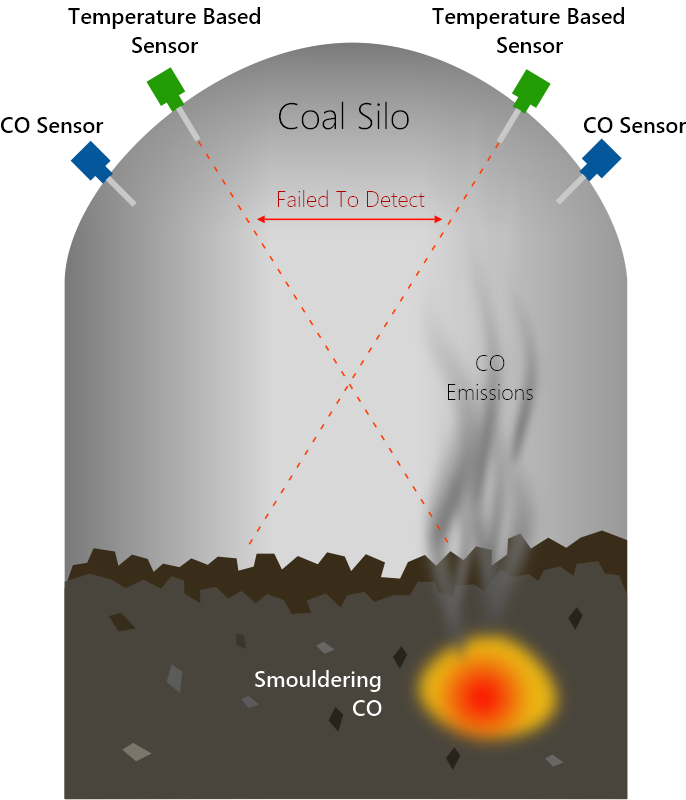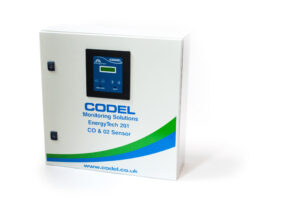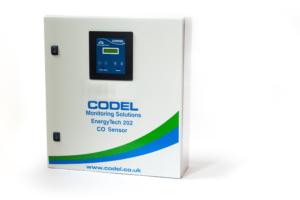Soporte en todo el mundo
Over 25 distributors and support centres worldwide
Contratos de mantenimiento flexibles
Contratos específicos de planta a medida con soporte las 24 horas
30 years experience
Desarrollando, fabricando e instalando
Getting the design right for a reliable CO mill fire monitoring system
Spontaneous combustion of coal in a coal handling system (coal conveyors, coal mills, coal silos, coal
bunkers) has long been recognized as a fire hazard. Coal fires usually start in hotspots when coal
absorbs oxygen from the air, heat generated by this process can then ignite a fire. Without
a complete combustion, smouldering of fuel will produce large amounts of CO gas.
Sample Probe Filter
Condensate Removal

The choice between Electro Chemical (EC) and Infrared (IR)
Célula electroquímica
The EC cell has a fundamentally different operating state compared to the IR. The EC cell is a modified micro fuel cell (essentially a battery). The gas diffuses over the sensor and a current is generated. This device has a limited lifespan as the material inside are consumed by the measurement. The lifespan is dependant of the actual levels of gas being measured (higher readings equal shorter life). The target lifespan for a CODEL EC cell measuring 0-50 ppm is a realistic two years. As the sensor is consumed the output is reduced. For this reason, the EC cell needs to be recalibrated regularly. This will be more often if the client is measuring a very low (or zero) concentration of CO. The output voltage is zero at zero ppm CO, a dead cell is only detectable by the injection of CO gas. The lifetime of the cell can be maximised by controlling the temperature and humidity of the cell within its housing.
Absorción infrarroja
The IR measurement assembly is a cross correlation device and is a heavy industrial unit. It is not a consumable and can be considered a lifetime component. It has a maximum transmission at zero ppm, hence the concern over dead cells does not apply here and the unit does not need calibrating quite so often. The IR measurement assembly has a much larger measuring range compared to any EC cell. Unlike IR an EC monitor will saturate quickly in the event of a fire and may not return to service for some time afterwards (over-range). Clients often wish to see the value which the CO reaches during the event, not just the fact that it has occurred.
Read more about CO coal mill applications here.
Complete range of Coal Mill monitors using EC and IR technology.
La detección temprana de incendios en los molinos de pulverización de carbón es esencial para evitar daños catastróficos a la planta y evitar la amenaza de lesiones al personal
CO
Como alternativa al analizador EC CELL EnergyTech 201, el EnergyTech 202 utiliza un banco óptico de infrarrojos para la medición de CO.
CO
El EnergyTech 203 utiliza el mismo banco óptico infrarrojo que el EnegyTech 202, pero incluye una medición de oxígeno basada en Zircona.
CO y O2




